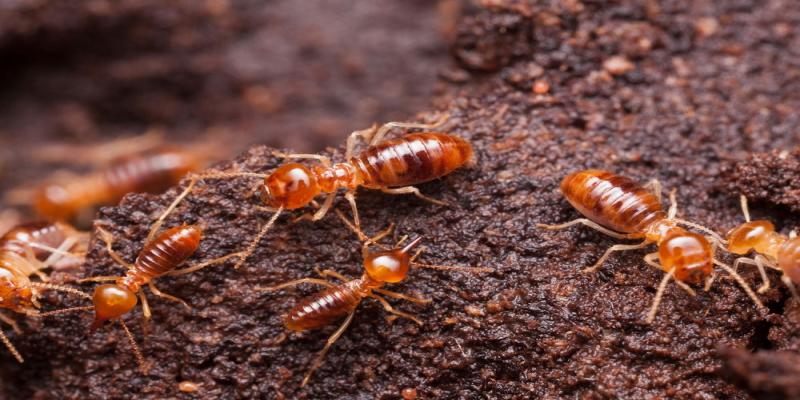Termites don’t destroy homes overnight—but given enough time, they can do severe damage. Learn how quickly they work and what treatments offer real, long-term protection.
The Hidden Clock Ticking Behind Your Walls
Most homeowners don’t think much about termites until there’s already visible damage—but by then, the colony may have been active for years. Termites are slow, silent destroyers. They won’t bring a house down in days, or even months—but left unchecked, they absolutely can cause structural failures. So the question isn’t if termites will damage your property—it’s how long you can afford to wait before acting.
Let’s break down the real timeline of termite destruction and what kind of treatment will actually stop the damage before it turns into a full-blown repair nightmare.
The Problem: Termites Work Slowly—But Relentlessly
Contrary to myth, termites don’t tear through homes in weeks. But that doesn’t mean they’re not dangerous.
A typical subterranean termite colony can have up to two million workers, and while each termite only eats a small amount of wood daily, their combined effort adds up—fast. If the conditions are right, a large colony can cause serious structural issues in 3–5 years. And the worst part? Homeowners often don’t notice until floorboards sag, walls crack, or doors stop fitting their frames.
Here’s what makes termite damage so sneaky:
- They often enter from beneath the house or inside walls, where you can’t see the damage until it’s extensive.
- They don’t make noise or leave droppings like rodents.
- Most signs—mud tubes, soft wood, bubbling paint—are missed until major repairs are needed.
And in places like Brooklyn, Queens, and Staten Island, where older homes with wood framing are common, this kind of long-term infestation is far from rare.
Agitation: Real Damage, Real Costs
It’s one thing to know termites cause damage—it’s another to face a $20,000 repair bill after ignoring the problem.
Case in Point: A Staten Island Two-Family Home in Trouble
Last year, a homeowner in the Eltingville neighborhood of Staten Island called us after noticing their back porch was starting to slant downward. It was a brick-faced two-family home from the 1950s—solid on the outside, but full of original wood framing inside.
They assumed it was a simple foundation issue. What we found shocked them.
Termites had been at work for at least four years. They entered through moisture-damaged soil near the base of a downspout and moved through untreated sill plates and joists. A structural beam in the crawlspace had been hollowed out, with barely any sound wood left inside.
We had to:
- Jack up part of the structure to replace the beam.
- Treat the entire perimeter with termiticide.
- Install monitoring stations to ensure long-term protection.
The total cost? Over $14,000. And it could have been avoided with earlier detection and effective termite control.
Solution: What Treatment Actually Works—and Why Timing Matters
So, what’s the best way to stop termites before they cause thousands in damage?
It depends on the type of termite, the structure of the building, and how early you catch the infestation. But broadly speaking, there are two approaches that stand out:
1. Liquid Barrier Treatments
This involves applying a long-lasting termiticide around the foundation. The chemical creates an invisible barrier in the soil that termites can’t pass without dying. This method is highly effective and often used when termites are already present.
- Best for: Homes with known termite activity
- How long it lasts: Up to 10 years with proper application
- Pros: Fast, comprehensive protection
- Cons: Requires digging and drilling in some cases
2. Baiting Systems
This method uses strategically placed bait stations to attract termites away from your home. The bait contains a slow-acting insecticide that the workers bring back to the colony, eventually killing the queen and eliminating the colony from the inside out.
- Best for: Ongoing prevention and monitoring
- How long it lasts: Indefinitely, with regular maintenance
- Pros: Less invasive, good for long-term monitoring
- Cons: Slower to take full effect
In many NYC homes—especially those with limited soil access or tight urban spaces—baiting systems are a practical long-term solution. But for properties already experiencing damage, we often recommend starting with a liquid treatment, followed by baiting as part of a monitoring plan.
Protecting Your Manhattan Home: The Ultimate Guide to Termite Treatment and Prevention
How to Know What’s Right for Your Home
Choosing between treatments depends on your unique situation. Ask yourself:
- Have you seen signs like mud tubes, hollow wood, or swarmers?
- Is your home built on a slab, crawlspace, or basement?
- Do you have a history of termite issues in your neighborhood?
In areas like Queens and Brooklyn, many homes were built decades ago with minimal termite protection. That makes professional inspections and early treatment essential—especially for houses with wood framing, crawlspaces, or excessive moisture.
If you’re searching for termite control options that actually work, don’t rely on DIY solutions. Sprays from the hardware store won’t stop a hidden colony. And by the time you see damage, it’s already advanced.
The Bottom Line: The Sooner You Act, the Less You’ll Spend
Termites don’t destroy a home overnight—but give them a few years and they’ll quietly eat through thousands in property value. Whether you’re in Staten Island, the Bronx, or Queens, ignoring the signs won’t make them go away.
Professional termite control isn’t just about removing the current colony. It’s about preventing the next one from taking hold.
Don’t wait until you feel the floor sag or the walls crack.
Call now to protect your home before the damage begins:
📱 +1 718-427-6200





